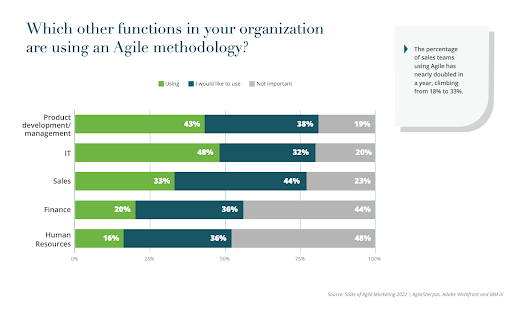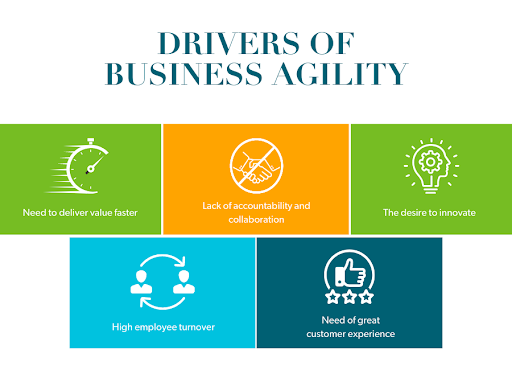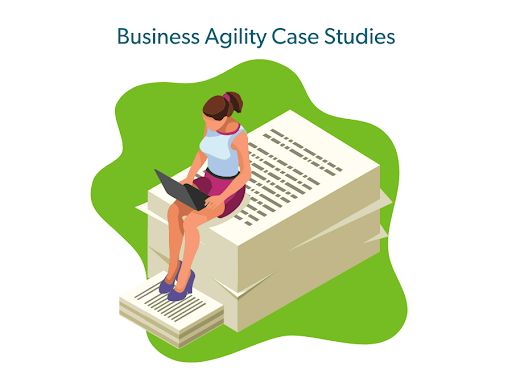-
- marketing agility
- Teams
- Organizations
- Education
- enterprise
- Articles
- Individuals
- Transformation
- Solution
- Leadership
- Getting Started
- business agility
- agile management
- going agile
- Frameworks
- agile mindset
- Agile Marketing Tools
- agile marketing journey
- organizational alignment
- Agile Marketers
- People
- Selection
- (Featured Posts)
- strategy
- agile journey
- Metrics and Data
- Kanban
- Resources
- Why Agile Marketing
- agile project management
- self-managing team
- Meetings
- Scrum
- agile adoption
- scaled agile marketing
- tactics
- scaled agile
- AI
- Agile Meetings
- agile marketing training
- agile takeaways
- Agile Leadership
- agile coach
- enterprise marketing agility
- Scrumban
- state of agile marketing
- team empowerment
- Intermediate
- agile marketing mindset
- agile marketing planning
- agile plan
- Individual
- Team
- Videos
- agile marketing
- kanban board
- Agile Marketing Terms
- agile transformation
- traditional marketing
- FAQ
- agile teams
- Agile Marketing Glossary
- CoE
- Scrumban
- agile
- agile marketer
- agile marketing case study
- agile marketing coaching
- agile marketing leaders
- agile marketing methodologies
- agile marketing metrics
- agile pilot
- agile sales
- agile team
- agile work breakdown
- cycle time
- employee satisfaction
- marketing value stream
- marketing-analytics
- remote teams
- sprints
- throughput
- work breakdown structure
- News
- agile brand
- agile marketing books
- agile marketing pilot
- agile marketing transformation
- agile review process
- agile team charter
- cost of delay
- hybrid framework
- pdca
- remote working
- scrum master
- stable agile teams
- stand ups
- startups
- team charter
- team morale
- user story
- value stream mapping
- visual workflow

Ten years ago, it was rare to see a team outside of tech implementing Agile. Now, entire enterprise-level organizations apply it to improve their way of working.
Marketing was the function that opened the way to business agility. It showed leaders that Agile works outside of software development without sacrificing any of the accompanying benefits.
Once marketing gave Agile the seal of approval, teams in sales, human resources, procurement, and other business functions began to take an interest.
In fact, some have already started making their first steps into adopting Agile in their context. The Annual State of Agile Marketing Report showed that the number of sales teams using Agile has nearly doubled in just a year, climbing from 18% to 33%.
And this is just a fraction of the growing number of departments and organizations that have been trying to scale Agile and evolve their entire business process.

Before making the decision to follow in their footsteps, we have to understand that each organizational function will likely require a unique approach to Agile.
Although there are not that many business agility case studies out there (yet!), there are some organizations that have documented their success and challenges of tailoring agility in the business. But first, let’s get on the same page about what the new and exciting prospect of business agility truly means.
What is Business Agility?
Business agility is an alternative approach to managing organizations, the teams within them, and the people who make up those teams. It emphasizes frequent delivery of value to customers and stakeholders through the use of iterative workflows, visualization techniques, and more rapid planning cycles.

There are 5 common drivers of business agility:
- The need to deliver value faster
- The lack of accountability and collaboration caused by organizational silos
- The desire to innovate
- High employee turnover
- The rising importance of facilitating a great customer experience
Of course, each organization may have its unique reasons for pursuing business agility, as you'll see from the case studies showcased later in the article. The one thing they share is the drive and willingness to change.
Let’s explore how Agile is continually evolving sales, human resources, procurement, and finance processes.
Business Agility Examples To Know
Regardless of our line of work, applying Agile is one of the proven ways to ensure that we will remain effective in the face of constant change and disruption. There are plenty of business agility examples to learn from presented through the prism of key organizational functions including:
- Sales
- Human Resources
- Finance
- Procurement
Agile Sales
Agile has been gaining rapid popularity in sales process management, and this is not limited only to last year’s findings. Since marketing and sales are two sides of the same coin, Agile’s influence on the first has been affecting heavily the latter. There are several notable differences between traditional sales and Agile sales.
|
Traditional Sales Approach |
Agile Sales |
|
Centered on individual sales plans, goals, and key performance indicators |
A self-organized team united in achieving a common goal |
|
The key objective is to meet the sales quota |
The primary goal is to understand the needs of the client, facilitate a continuous process of getting feedback from the client, and generate value for the customer faster than the competition |
|
The sales team believes that their work is the most important within the organization since it generates revenue |
The sales team understands that it is part of a system that generates value for the customer and aims to contribute to that goal |
|
Sales and marketing are parallel departments that often argue with one another |
Sales and marketing interact in an environment that supports the achievement of a common goal |
|
Executive management pulls the strings of the sales process by assigning sales plans to employees and monitoring the number of meetings, calls, etc. |
Executive management sets the sales goals but the Agile teams have the freedom to decide how to achieve them. |
This application of business agility illustrates why so many organizations find value in adopting Agile within their sales teams.
Agile HR
Human Resources is a business function with a wide variety of stakeholders and types of work — just like marketing, the original Agile business function.
Experts within the HR department are responsible for both recruitment, employer branding, retention of employees, and, depending on the organization, all the other tasks in between. All this responsibility turns HR into a linchpin function that contributes greatly to organizational success (or failure).
The differences between Traditional HR and Agile HR to look out for:
|
Traditional HR Approach |
Agile HR |
|
When a position opens within the organization, the search for candidates begins. Once the best candidate is identified and recruited, the talent acquisition process is complete. |
The organization invests in its employer brand and cultivates ongoing relationships with talent across multiple channels. |
|
Talent management is owned and controlled by HR, and the processes by which talent is acquired, evaluated, and developed are proprietary and inaccessible. |
Talent management is facilitated by HR, which empowers employees to take ownership of their own development. Individuals understand and are active participants in talent acquisition, evaluation, and development processes. |
|
Underperforming employees are assigned training to achieve specific performance levels. |
Employees are given a myriad of opportunities to continuously learn and develop themselves proactively and independently. |
|
Job descriptions are discrete elements in a complex system. Job requirements are related to specific workplace tasks. |
All roles directly support the mission and values of the organization, and everyone understands how their performance contributes to them. |
|
Large-scale initiatives are thoroughly researched, resourced, and deployed over the course of months or even years. |
Small-scale initiatives are piloted within a specific team or business unit. Feedback is gathered as early and often as possible to determine whether the initiative should be expanded or abandoned. |
|
The HR function is focused on record-keeping and defensibility. HR success is measured in the completeness of documentation. |
HR is focused on engaging employees to enhance self-motivation and encourage collaboration. Success is tied to employee retention, employee satisfaction levels, innovation levels, and organizational goodwill and trust. |
This HR application of business illustrates that Agile HR is more suitable for the increasingly competitive environment that most organizations have to navigate at the moment. It is all about adopting structures, attitudes, processes, and tools to become more flexible, more nimble, and faster in coming to a decision.
Agile Finance
The financial department covers multiple key areas like budgeting, accounting, control, and treasury management. Agile can be invaluable in improving all of them in the following ways:
|
Traditional Approach |
Agile Finance |
|
|
Budgeting |
Detailed upfront financial projections and fixed project-based budgeting |
Rolling forecast combined with short-term planning and Agile budgeting |
|
Accounting |
Distinction of capital and operational expenses according to defined phase gates |
Processes designed to support incremental delivery of value |
|
Control |
Focus on reactive budget tracking and lagging indicators |
Implementation of a system based on trust with a focus on frequent feedback loops and leading indicators |
|
Treasury management |
Detailed upfront business cases that indicate success and try to eliminate uncertainties |
Driven by the desire to invest and by the pursuit of generating the highest possible value. Funding is incremental to preserve options |
Embracing agility within finance is exceptionally challenging. Finance departments are notoriously rigid, averse to change, and uncomfortable with uncertainty. However, the financial teams that have the persistence to follow through stand to gain a lot for their teams and their organizations at large.
Agile Procurement
Procurement is one of the laggards when it comes to Agile adoption. However, the supply chain crisis caused by COVID-19 significantly accelerated the transformation process. The main differences between traditional and Agile procurement are:
|
Traditional Procurement |
Agile Procurement |
|
Lengthy and linear processes |
Iterative and fast |
|
Focused on the process |
Focused on the results |
|
Aiming to “squeeze” suppliers |
Aiming to collaborate with suppliers |
|
Low level of client involvement |
High level of client involvement |
|
Low flexibility |
Adaptable to change |
|
Performance is evaluated based on realized savings |
Performance is evaluated based on delivered value |
Even though Agile procurement has yet to gain serious traction, now it's needed more than many realize. Since procurement is often tied to long-term projects, organizations need to ensure that they’ve got the ability to adapt to changes along the way.
Before moving on the some business agility examples, why don't you take a second to get our Agile Marketing Transformation Checklist?
Examples of Business Agility in Real Companies
Agile is already transforming key organizational functions like sales, HR, finance, and procurement. There are already organizations that have documented their stories to demonstrate business agility’s success in these lines of work.

Agile Sales Case Study
Company: Global B2B Integration Services Provider
Industry: Tech
Challenge: The organization was struggling to achieve its business goals and quickly onboard new sales team members.
Outcome: In just 6 months, sales productivity per person increased by 12.8%. The pipeline’s size grew by 7.5% and its velocity by 23.6%. New hires required 20.5% less time to close their first deals.
Source: HubSpot
Agile HR Case Study
Company: Thales
Industry: Aerospace
Challenge: Before transforming their process with the help of Agile, the talent acquisition team at Thales was serving the company through partners, who were individually serving different business units within the company.
The talent acquisition leader within the company, Kirsten Booth, saw potential in upskilling her team in how to work in an Agile way. The goal was to increase collaboration and communication between the talent acquisition partners and deliver more value to the business.
Outcome: Nine months after the transformation began, the team was able to show a 72% increase in performance consisting of higher employee engagement, increased sense of belonging, and enjoyment at work.
Source: Agile HR Community
Agile Finance Case Study
Organization: Griffith University
Industry: Education
Challenge: The finance team within Griffith University had found their throughput was ‘clogged’ and people were disengaging from their work. The amount of work coming through was in such a high volume that people were only focussing on their own backlog.
The challenge was finding a way to work better together to get products and advice out the door in a way that would also increase work engagement.
Most Exciting Takeaway: By implementing Agile, Griffith University’s financial team achieved a permanent shift in mindset and reduced the time spent on processing tasks by 100%, which resulted in a major increase of their throughput.
Source: EPiC
Agile Procurement Case Study
Company: Air France KLM
Industry: Aviation
Challenge: Air France KLM Cargo Operations needed to improve the efficiency and productivity of its door-to-door cargo. Time is essential in freight and any delay or break in the chain would lead to product waste and unhappy customers.
It was critical to create a new booking system to improve the efficiency within 6 months.
Outcome: After applying Agile to their procurement process, Air France was able to select a vendor and actually start the project within 6 weeks. The team was quickly onboarded and made aware of the business context and challenges. As a result, the booking system was created on time.
Source: Agile Business Consortium
Ready to Start Your Business Agility Journey?
With business agility on the horizon, Agile is proving even more adaptive and widely applicable than the signatories of the original manifesto originally through.
Based on the examples and case studies above, it is natural to start to match the benefits of business agility to the pain points created by the volatile environment of today’s business world.
Sales, human resources, finance, and procurement are just a few of the great examples we can analyze at this point in the history of business agility. We’re certain that even more organizational functions will follow in their footsteps and adapt the methodology to serve their needs in the next few years.
Are you leading a business unit? Part of one? With such promising precedents in those documented in this article, now is the perfect time to take action and test Agile in a new context.
If you're wondering where to start, check out the library of microlearning content we developed based on years of working with Agile teams, and the following 4 microlearning paths in particular:
- Path 1: Agile Basics
- Path 2: Agile Team Applications
- Path 3: Agile Leadership
- Path 4: Agile Culture & Transformation
Each of them contains 10 bite-sized lessons, 20 short engaging videos, and 10+ downloadable resources that can boost your Agile knowledge in minutes even during the busiest days.
Before moving on, don't forget to get your copy of our Agile Marketing Transformation Checklist.
Topics discussed
Improve your Marketing Ops every week
Subscribe to our blog to get insights sent directly to your inbox.


.png?width=450&height=250&name=Articles%20Feature%20Image%20(1).png)
